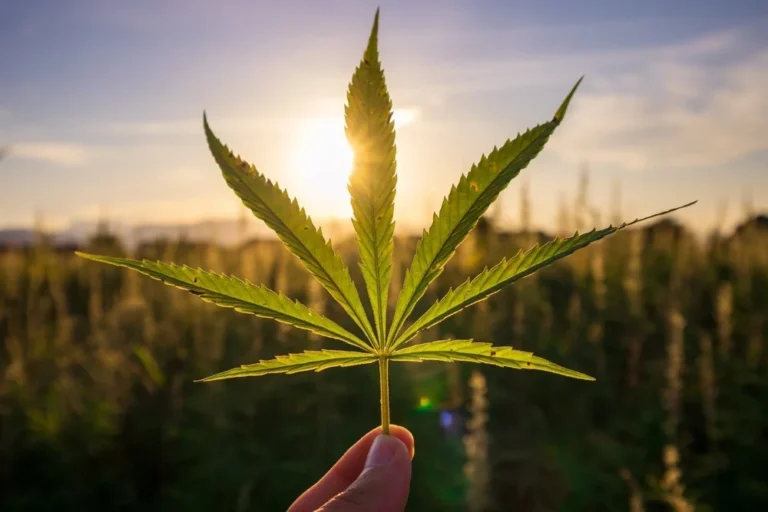Sleep is a vital process that restores and rejuvenates our bodies and minds. For individuals struggling with sleep disorders or insomnia, finding effective solutions can be challenging. In recent years, cannabis has emerged as a potential ally in promoting better sleep.
In this article, we will delve into the fascinating science behind cannabis and sleep, focusing on the role of the endocannabinoid system (ECS) and the psychoactive compound known as THC. By understanding these mechanisms, we hope to shed light on how certain types of cannabis strains, as illustrated by High Yields, can influence sleep, as well as their potential benefits for individuals seeking a restful night’s sleep.
The Endocannabinoid System and Sleep Regulation

The endocannabinoid system (ECS) is a complex network of receptors, endocannabinoids, and enzymes that play a crucial role in maintaining balance and homeostasis within the body. This intricate system is involved in a wide range of physiological processes, including sleep regulation.
At the heart of the ECS are the cannabinoid receptors, with the CB1 receptors being the primary type involved in sleep modulation. These receptors are predominantly found in the central nervous system, particularly in regions associated with sleep regulation, such as the hypothalamus and brainstem.
Activation of CB1 receptors influences the sleep-wake cycle, which is the natural rhythm that governs our periods of wakefulness and sleep. By interacting with the endocannabinoids produced naturally in the body or with external cannabinoids like THC, CB1 receptors can impact the duration and quality of sleep.
One notable endocannabinoid involved in sleep induction is anandamide. Anandamide acts as a partial agonist of CB1 receptors, meaning it can bind to and activate these receptors to some extent. Studies have suggested that anandamide levels fluctuate during the sleep cycle, with higher concentrations observed during the sleep phase. This correlation suggests a potential role for anandamide in sleep regulation and the induction of sleep.
THC and Sleep: A Complex Relationship

Tetrahydrocannabinol (THC), the primary psychoactive compound in cannabis, has long been associated with its sedating and sleep-inducing effects. However, the relationship between THC and sleep is complex and influenced by several factors, including dosage, timing, and individual differences.
One of the notable effects of THC on sleep is its potential to shorten sleep onset latency, which refers to the time it takes to fall asleep after getting into bed. Studies have shown that THC can help individuals fall asleep more quickly, reducing the time spent tossing and turning before entering sleep. This effect can be particularly beneficial for those who struggle with insomnia or have difficulty initiating sleep.
In addition to shortening sleep onset latency, THC has also been found to increase overall sleep time. It can extend the duration of sleep, allowing individuals to experience longer periods of rest. This prolonged sleep duration may be beneficial for individuals who have difficulty achieving adequate sleep due to sleep disorders or other factors.
Furthermore, THC has shown the potential to promote deep, restorative sleep. Deep sleep, also known as slow-wave sleep, is a crucial stage of sleep associated with physical and mental restoration. THC has been observed to enhance the amount of time spent in this deep sleep stage, potentially contributing to improved sleep quality and waking up feeling more refreshed.
Another potential benefit of THC in relation to sleep is its ability to reduce the frequency of nighttime awakenings. Sleep disturbances, such as waking up multiple times throughout the night, can disrupt the sleep cycle and result in poor sleep quality. By reducing the number of nighttime awakenings, THC may contribute to a more uninterrupted sleep experience, allowing individuals to maintain longer periods of consolidated sleep.
These sleep-inducing effects of THC make it an attractive option for individuals seeking relief from insomnia or sleep disturbances. However, it is important to note that the effects of THC on sleep can vary depending on several factors. Individual differences in metabolism, sensitivity to THC, and tolerance levels can influence the response to its sleep-inducing properties.
Potential Downsides and Tolerance Development

While THC has demonstrated potential benefits for sleep, it is important to consider the potential downsides associated with chronic use. Although THC may initially improve sleep, prolonged and frequent use can have negative effects on the natural sleep architecture.
One of the concerns with regular THC use is its impact on rapid eye movement (REM) sleep, which is a vital stage of the sleep cycle associated with dreaming and cognitive restoration. Studies have shown that THC can suppress REM sleep, leading to a reduction in the amount and quality of REM sleep experienced during the night. REM sleep deprivation can have various consequences, including impaired memory consolidation, emotional regulation, and overall cognitive function.
Disruption of the sleep architecture, including the suppression of REM sleep, can result in daytime grogginess and difficulties in maintaining optimal alertness and cognitive performance during waking hours. This grogginess, commonly referred to as a “cannabis hangover,” may impair daytime functioning and productivity. It is important to note that these effects can vary depending on individual factors, dosage, and frequency of THC use.
Another consideration with long-term THC use is the potential development of tolerance. Tolerance occurs when the body becomes less responsive to the effects of a substance over time, requiring higher doses to achieve the same level of desired effects. In the context of sleep, tolerance to THC’s sleep-inducing properties may develop, leading to diminished effectiveness as a sleep aid. This tolerance can contribute to a cycle of escalating THC consumption, which may have implications for overall health and well-being.
It is worth noting that the potential downsides associated with chronic THC use are not universal and may vary from person to person. Factors such as individual physiology, genetics, dosage, and frequency of use all play a role in determining the effects and potential negative consequences of THC on sleep.
To mitigate potential risks, it is essential to approach THC use for sleep with caution and moderation. It is advisable to consult with healthcare professionals, such as doctors or sleep specialists, who can provide personalized guidance and monitoring. They can help determine appropriate dosages, frequencies, and potential alternative treatments or strategies for managing sleep disorders.
In Conclusion
The science behind cannabis’s effects on sleep revolves around the intricate interplay of the endocannabinoid system and THC. The endocannabinoid system, through its CB1 receptors and endocannabinoids, plays a vital role in sleep regulation. THC exhibits sleep-inducing effects, but long-term use and tolerance development should be considered. Further research is needed to fully understand the mechanisms underlying cannabis’s impact on sleep and to identify the most effective and safe strategies for utilizing cannabis as a sleep aid.
Related Posts:
- 20 Best Gaming Headset Under 50$ 2024 - for PC, PS4,…
- The Different Forms of Delta 8 THC: A Comprehensive Guide
- 12 Best Car Wax For Black Cars 2024 - Protection and…
- 15 Best Dog Food For Allergies 2024 - Adult, Puppy…
- 15 Best Shoes for Jumping Rope 2024 - Maintain a…
- Top 16 Best Office Chair Covers 2024 - Chair…







